Franco Vimercati. Il mondo in un granello di sabbia

Dal 7 June 2023 al 10 September 2023
Roma
Luogo: Galleria Nazionale d’Arte Moderna e Contemporanea
Indirizzo: Viale Belle Arti 131
Curatori: Susan Bright
Costo del biglietto: intero: € 10, ridotto: € 7 / € 5 / € 2, gratuito: docenti e studenti iscritti alle facoltà di architettura, di conservazione dei beni culturali, di scienze della formazione e ai corsi di laurea in lettere o materie letterarie con indirizzo archeologico o storico artistico delle facoltà di lettere e filosofia, o a facoltà e corsi corrispondenti istituiti negli stati membri dell’Unione europea – portatori di handicap e un accompagnatore, giornalisti, guide turistiche
Telefono per informazioni: +39 06 322981
E-Mail info: gan-amc@beniculturali.it
Sito ufficiale: http://lagallerianazionale.com
Franco Vimercati (Milano 1940-2001), partendo da una formazione iniziale come pittore presso l’Accademia di Brera, nel 1973 comincia a indirizzare la sua pratica artistica verso la fotografia. Dopo la prima serie Le Langhe, consistente in 38 ritratti di alcuni abitanti di un paesino delle Langhe piemontesi, le sue successive fotografie verranno scattate nel proprio ambiente domestico riproducendo una ristretta gamma di oggetti: piastrelle, assi del pavimento o oggetti d’uso quotidiano, sempre a portata di mano dell’artista. La bellezza e il fascino esercitato dagli oggetti scaturiscono dall'equilibrio apparentemente contraddittorio tra intimità e rigorosa oggettività, o tra banalità e poesia, insito nelle immagini.
Spesso realizzate in serie, le fotografie richiamano i lavori dell'arte concettuale americana di alcuni suoi contemporanei, come Jan Dibbets, Ed Ruscha o Douglas Huebler, e vi si riscontra l’influenza esercitata su di lui dalle nuove scoperte artistiche del minimalismo e da figure come Ad Reinhardt, Robert Ryman, Agnes Martin e Giulio Paolini. Come è evidente per gran parte della produzione dell'epoca, anche Franco Vimercati si è confrontato con gli aspetti tecnici della fotografia del XX secolo, con le sue caratteristiche essenziali e, soprattutto, con i suoi limiti, come quelli inerenti le fasi del lavoro con la pellicola, la stampa in camera oscura, il formato e la serialità. In Franco Vimercati, tuttavia, l’intenzione di superare le indagini scrupolose della propria ricerca e i processi sperimentali basati esclusivamente sul mezzo, permettono di collocare il suo lavoro su un registro più poetico.
Osservando le fotografie di Franco Vimercati, emerge la centralità dell’elemento del tempo: scorrono le lievi mutazioni del giorno, i luoghi della casa e le ombre riflesse dell'artista stesso insieme alla luce che si riflette a sua volta negli oggetti. Le fotografie richiamano metaforicamente il lavoro operoso che sta dietro all’unicità e alla perizia artigianale di un tappeto annodato a mano, o ancora la concisa densità delle note musicali di Bach, due immaginari distanti ed entrambi particolarmente cari all'artista.
Il lavoro di Franco Vimercati richiede quindi una attenta contemplazione e lo spettatore è invitato a prendersi il tempo per guardare l'opera al fine di cogliere l'attimo nelle immagini rimuovendo le connotazioni narrative, ricercando quel “granello di sabbia” che potrebbe trattenere un mondo al suo interno.
SCARICA IL COMUNICATO IN PDF

-
 Dal 8 November 2025 al 11 January 2026
Venezia | Museo Correr
Dal 8 November 2025 al 11 January 2026
Venezia | Museo Correr
CARATTERI. Calligrafia e tipografia: Corea del Sud e Stati Uniti
-
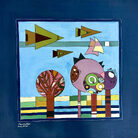 Dal 8 November 2025 al 22 February 2026
Brescia | Museo di Santa Giulia
Dal 8 November 2025 al 22 February 2026
Brescia | Museo di Santa Giulia
Material for an Exhibition. Storie, memorie e lotte dalla Palestina e dal Mediterraneo
-
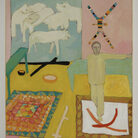 Dal 8 November 2025 al 18 January 2026
Perugia | Perugia, Spoleto e Gubbio
Dal 8 November 2025 al 18 January 2026
Perugia | Perugia, Spoleto e Gubbio
Mimmo Paladino. Antologica
-
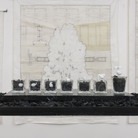 Dal 7 November 2025 al 25 January 2026
Roma | Museo Carlo Bilotti Aranciera di Villa Borghese
Dal 7 November 2025 al 25 January 2026
Roma | Museo Carlo Bilotti Aranciera di Villa Borghese
Silvia Scaringella. Deus sive natura
-
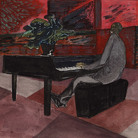 Dal 5 November 2025 al 1 March 2026
Asti | Palazzo Mazzetti
Dal 5 November 2025 al 1 March 2026
Asti | Palazzo Mazzetti
PAOLO CONTE. Original
-
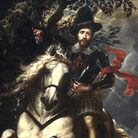 Dal 28 October 2025 al 15 February 2026
Brescia | Pinacoteca Tosio Martinengo
Dal 28 October 2025 al 15 February 2026
Brescia | Pinacoteca Tosio Martinengo
Peter Paul Rubens. Giovan Carlo Doria a cavallo


